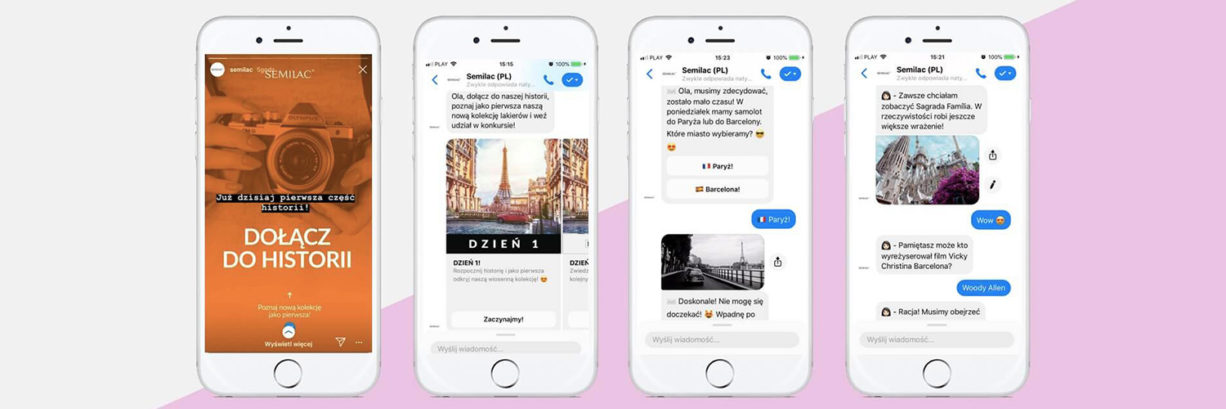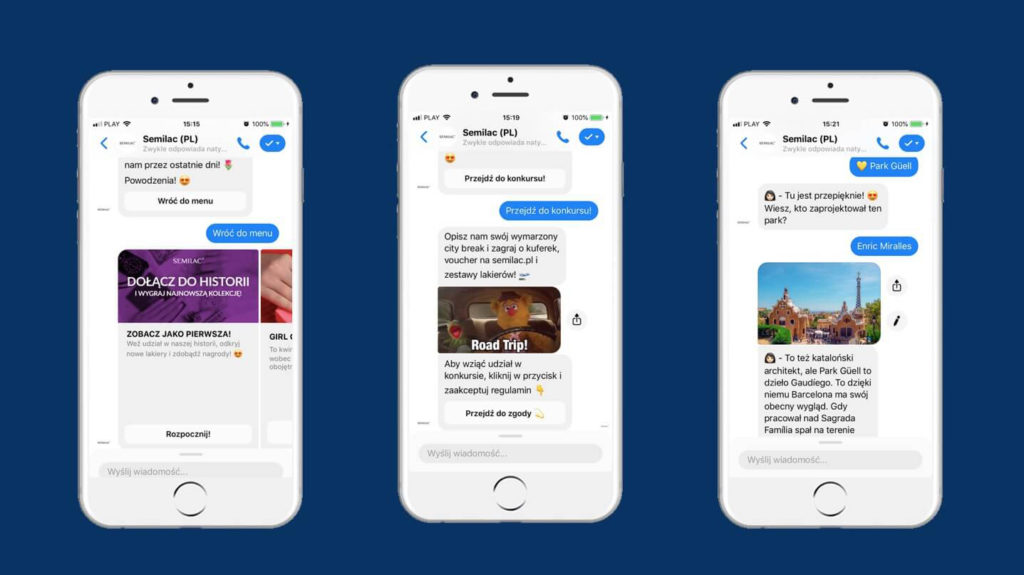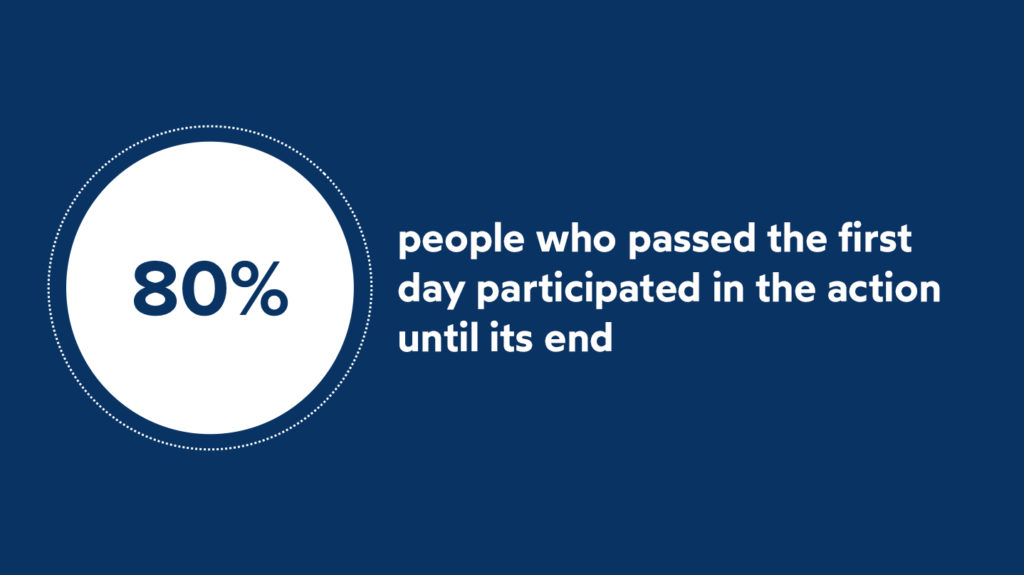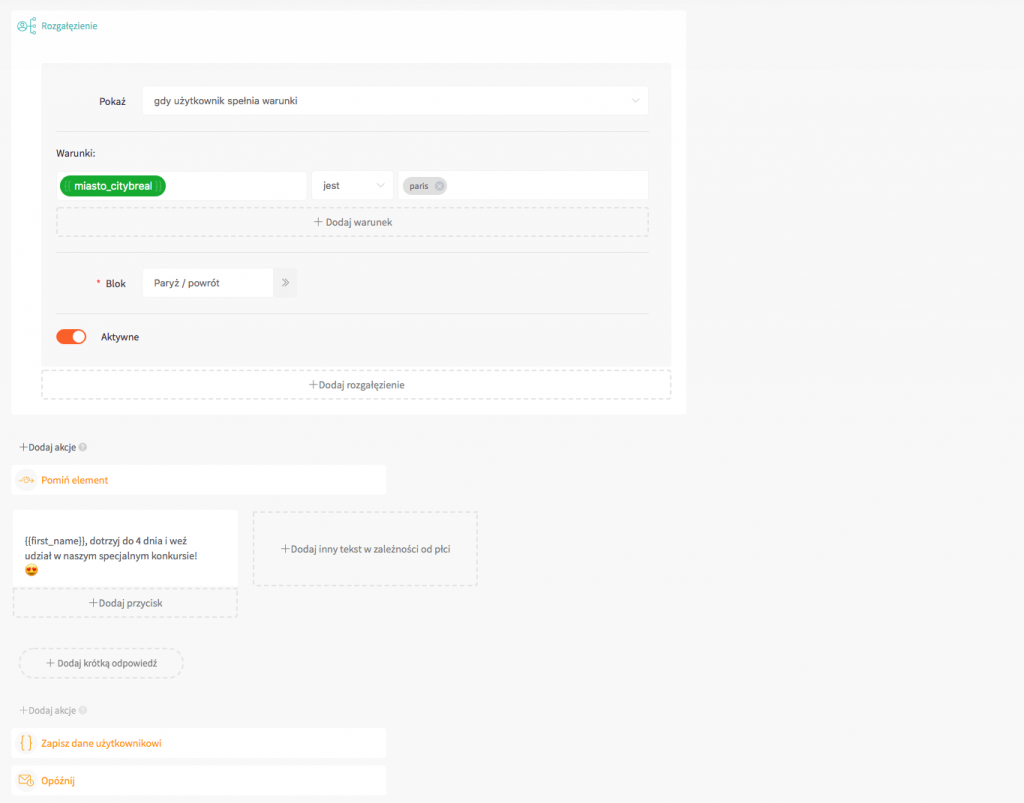Chatbot storytelling, or half a million interactions in four days

It’d been on our minds for some time to test a different way of communicating in a chatbot. A chatbot with buttons seemed like the perfect venue for a story, where users would make specific choices and answer questions leading them to winning a prize. Finally, an opportunity came across. Specifically, the launch of the City Break collection by Semilac, with users having exchanged half a million messages with a chatbot in four days. If you want to learn how storytelling works in chatbot, enjoy the reading!
The idea of storytelling in a chatbot
Recently, I came across the Game of Thrones Survival chatbot (just in time :)), where users made decisions which determined whether they would survive and could continue their story. Following the idea, I came up with a campaign for Semilac, the brand we’ve been working with for a few months now. I included it on the to-do list and was just waiting for the right opportunity. And the right opportunity came at the beginning of February, when together with Semilac we started brainstorming on how to promote their new collection in chatbot. The story revolved around its name: City Break and focused a short trip with a friend to a European city.
Back in February, we started our preparations: we developed scenarios that fit the chatbot, came up with the actual format, the ramifications and decisions, which would affect the further course of events, and we looked for additional materials.
Experiment guided by rules
We also had to develop the rules, according to which the entire story would take place. We wanted it to be engaging and as interactive as possible, but at the same time, a cool and simple break for users, packed with interesting facts about the chosen city or fashion. After all, March is the Fashion Week time. The entire game was one big experiment, with the chatbot as the tool of its implementation. We expected good results, but the things that happened exceeded our expectations.
The storytelling campaign followed a few core principles:
- For the first three days we published the story’s new episode, on the last day (fourth one), the story ended and a special contest was announced;
- Once a city (Paris or Barcelona) was chosen, the user could only run one story to the very end;
- Each subsequent day could only be accessed by people who had completed the previous day;
- People could only join the game until the end of day 3, from day 4 access for new users was blocked;
- At the end of each day, we unveiled a new nail polish from the City Break collection for users to preview.
Putting these rules into practice required a few more technical steps, which will be discussed shortly. To arouse interest of the girls from the very beginning, three days before the campaign start, we sent push notification, which reminded a message from a friend. With a several-thousand reach, the OR went to 99% and the CTR 58%. And this was just the beginning.

Day 1
On Monday, March 18, the project started for good. At 8 p.m. we made the first day of the story available and informed the users who’d been signed up for the push.
About 10 minutes later, Facebook turned off the inbox preview, because of the number of messages, and we couldn’t look into it for a while. Yet, at this point it was natural, since with so much news out there, the U.S. giant verified everything to make it was alright.
The inbox worked perfectly fine. Within two hours, users exchanged over 100,000 messages with the chatbot. We tested several solutions, which were meant
- to challenge users – they had to enter the chosen nail polish number in the message to proceed,
- to be fun – users had to decide whether or not to take a hair curler, with minor consequences of the decision to be seen only on the third day.
Day 2
It was the ultimate test and a point of getting an answer to the question of how many users would come back and keep playing. I expected that the second day people might be fewer than the first.
The outcome, however, exceeded my assumption and made it wrong. On Tuesday at 8 p.m., we sent Facebook more than 300 actions per second, which again ended up with inbox preview being locked briefly (even faster than before, after about 2 minutes.)
Ultimately, users exchanged over 120,000 messages with the chatbot that day.
Day 3
Having gained experience from the first two days, we prepared for day 3. To mitigate the risk of sending so many requests at the same time, we split a single push into five sent at certain intervals.
At the start of the third day, we also included a note that if the chatbot doesn’t respond, we ask for typing in a short message in order to proceed. Splitting the push didn’t bring the expected effect, however. Aware that the next day would start at 8 p.m., users entered the chatbot and after two minutes the inbox was again briefly disabled by Facebook.
The day three result beat the one of day two.
Is the article of value to you?
Results of storytelling campaign in the chatbot
Besides the insane number of messages exchanged with the chatbot, the push message data also exceeded our expectations. After the campaign teaser, 58% CTR seemed like an unmatched number. However, I saw really little. Every subsequent message reached several thousand people, and the results were as follows:
- Day 1: OR 100%, CTR 76%,
- Day 2: OR 100%, CTR 74%,
- Day 3: OR 100%, CTR 85%,
- Day 4: OR 100%, CTR 83%,
On the last day, we found that out of the people who made it through the first day, as many as 80 percent made it to the end.
The actual contest, which launched at the end of the campaign and could be accessed only after completing all the days (+only when joining the game for the first three days – we didn’t make it easy :)) attracted as many as 834 participants. Also, it was another surprise that Paris and Barcelona enjoyed almost exactly the same amount of interest, with a percentage split of 50.5 percent for Barcelona and 49.5 percent for Paris.

We recorded the highest spike in interest rates once the information about the campaign was published on Semilac’s Instastory. Besides, an ad leading to a specific story piece worked fine, and a post on the fanpage appeared. With links to Semilac’s online store page (after entering a nail polish number or choosing makeup for the day), several thousand people switched from the chatbot to the website.
Technical combination: chatbot in good shape
Lastly, I’d like to mention a few more technical aspects. Given the rules, according to which the whole campaign was to run, I had to apply a few solutions, the most important being:
- Assigning variables: over the course of the game, I wrote down a lot of variables that allowed me to split users into smaller groups — everything from choosing a city, which determined the story going forward, to taking (or not taking) a curl. The variables came in very handy on day three, when I split the push dispatch into smaller groups.
- Creating ramifications: with variables, I was able to introduce button ramifications, so that users could advance the story only according to predefined rules (the next day after going through the previous one or flow of the city selected at the beginning.)

- Skipping items: if someone has visited a place before, I didn’t want the same message to pop up for them the second time.
- Timed display: using the feature of displaying items at specific times, I was already able to set individual carousel tiles to specific times, so that they would automatically change from black and white & locked, to colored and allowing you to go to the selected day.
Contact with us
You are one step away from separating yourself from the communication community in your organization
You can contact us and we will prepare a dedicated offer for you.